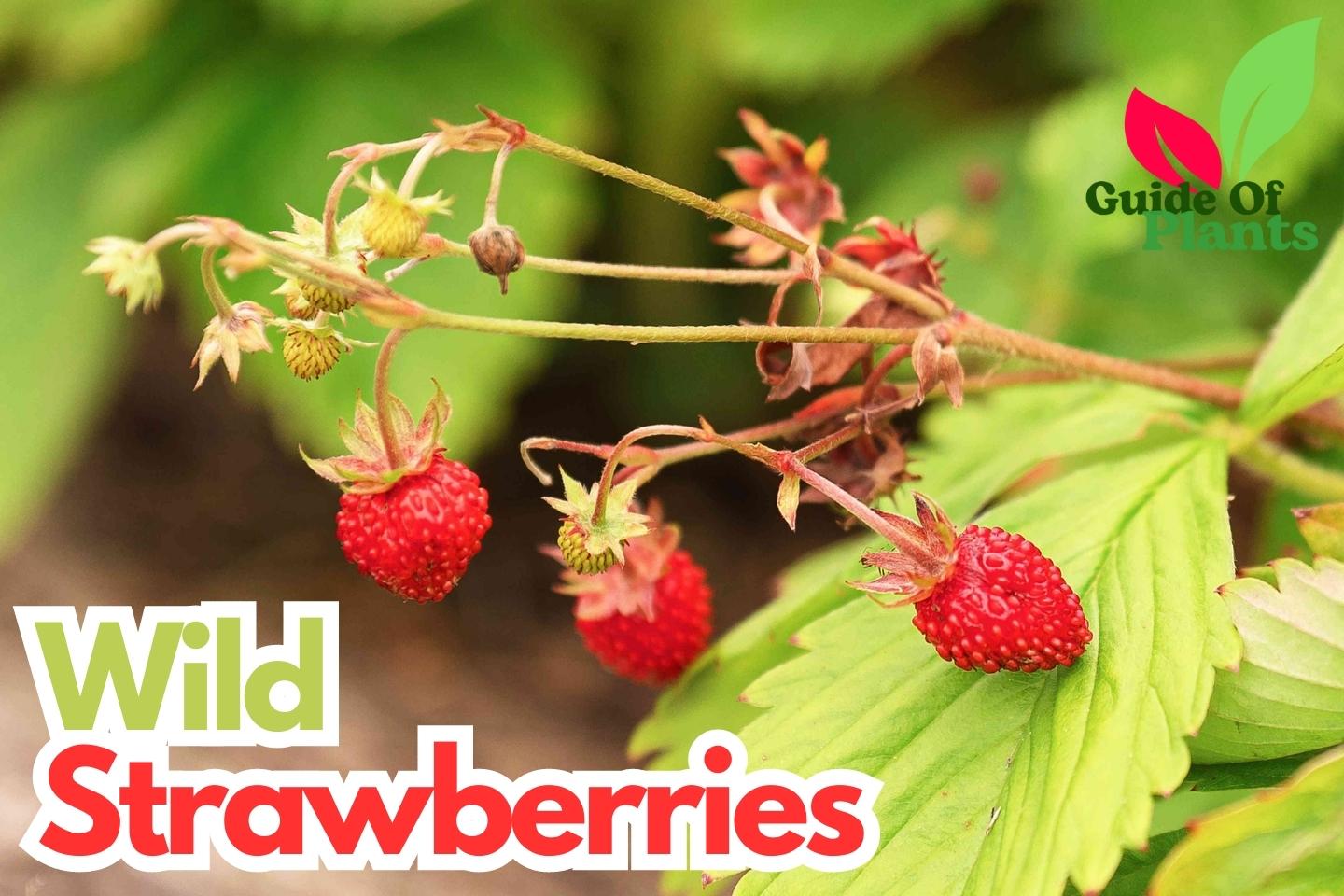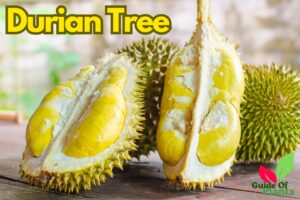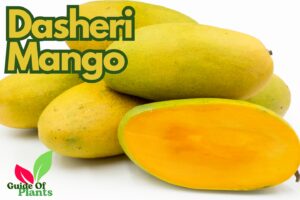Wild strawberries (Fragaria Vesca) are a delicious and nutritious fruit. It grows in the wild. In many countries, it is a common fruit. Though small, these ruby red berries pack a sweet, intense strawberry flavor that makes them a treasured seasonal treat. Unlike the larger grocery store varieties, wild strawberry plants are petite in size but bursting with fresh-picked berry taste. Read on to learn all about identifying, growing, harvesting, and enjoying wild strawberries. Lets start with Guide of Plants.
Table of Contents
Know More About:
What are Wild Strawberries?
This is a small, fragile fruit. It grows in meadows, forests, roadsides, and mountainous areas in many temperate regions. They are among the tiny ancestors of the big, juicy strawberries found in modern grocery stores. There are dozens of species and varieties of these strawberries. With subtle differences in size, leaf shape, flower color, and fruit flavor. The most common types in North America are the Virginia strawberry and the Alpine strawberry.
Origins and Natural Habitat of Wild Strawberries
Wild strawberries are native to areas with cool, temperate climates like northern Europe, Asia, and North America. They thrive in partly shaded spots and along the edges of wooded areas where humidity is higher. Strawberries form low-growing mats on the forest floor and send out runners that take root to create more daughter plants. They are well-adapted to poor, rocky soils.
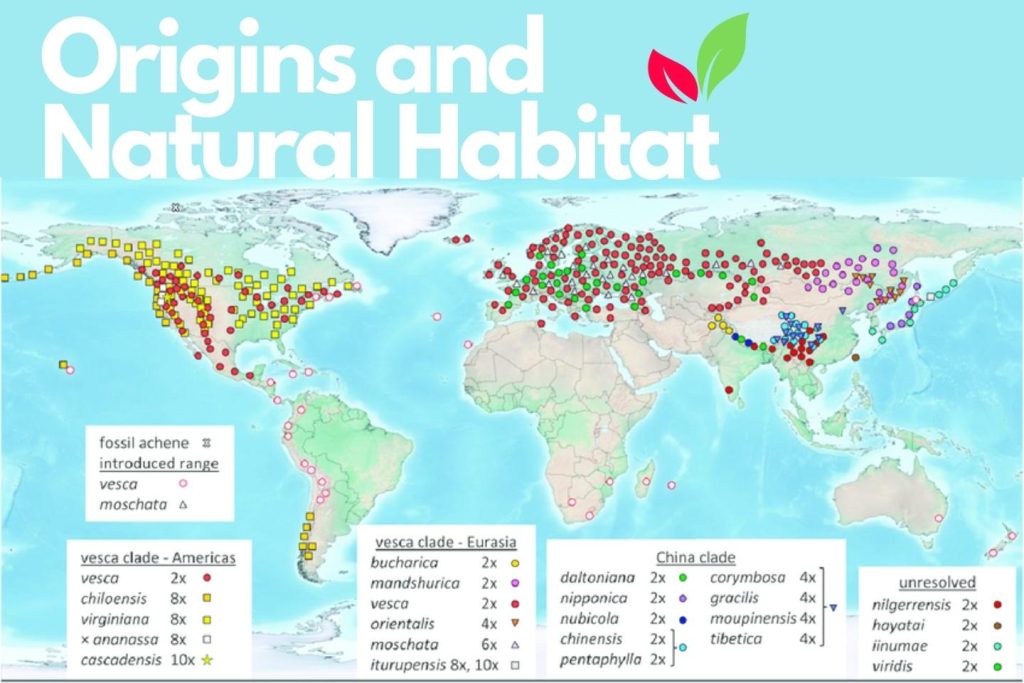
Wild Strawberry Species and Varieties
There are over a dozen unique wild strawberry species. Some of the most popular types include:
- Fragaria vesca or Woodland strawberry – The most common, found throughout temperate Northern Hemisphere. White flowers and excellent flavor.
- Fragaria virginiana or Virginia strawberry, – Native to eastern North America. Reddish colored fruits.
- Fragaria chiloensis or Beach strawberry – Found along Pacific coast. Large fruits for a wild variety.
- Fragaria moschata or Musk strawberry – Native to Europe. Very intensely flavored fruits.
- Fragaria nubicola or Alpine strawberry – Cold-hardy variety good for containers.
Identifying Wild Strawberry Plants
Growth Habits and Physical Characteristics
Wild strawberries form a low, carpet-like mat, spreading via runners. The leaves are in a three-leaflet pattern with toothed edges. Pretty white or slightly pinkish flowers bloom in spring. The red fruits appear in late spring through summer. Plants reach 4-6 inches tall.
Leaves, Flowers, and Fruit
The leaves are trifoliate with toothed edges and grow on long petioles. Flowers have five white petals and yellow centres. The red fruits are petite, usually less than 1 inch long. They have visible yellow seeds on the surface when ripe.
Differences Between Wild and Cultivated Strawberries
Cultivated garden strawberries are much larger, up to 2 inches long. They were bred to be bigger and higher-yielding. Wild strawberries form runners, while cultivated varieties grow in a bushy habit. This fruit has an intense, concentrated flavor, while cultivated berries tend to be milder and less sweet.
How do you grow wild strawberries in your home fruit garden?
If you love hunting for wild berries, consider cultivating your own patch at home! These strawberries are quite easy to grow if you provide the right conditions. Here are some tips for getting started:
- Purchase nursery-grown plants or dig up runners from an existing wild patch. Local ecotype varieties do best.
- Plant in spring in a partly shaded spot with organically rich, slightly acidic soil. Amend sandy soils with compost.
- Space plants 12-15 inches apart to allow runners to spread and form a lush groundcover.
- Water regularly during fruit formation, about 1 inch per week. Avoid wet foliage.
- Apply balanced organic fertilizer or compost tea monthly through summer.
- Weed and prune off old leaves regularly to improve air circulation.
- Pick berries frequently once they are ripe to encourage more fruit production.
- Mulch plants in fall for winter protection in cold climates.
With proper care, you can harvest basketfuls of petite, flavor-packed strawberries from your own backyard patch!
Growing Conditions for Wild Strawberries
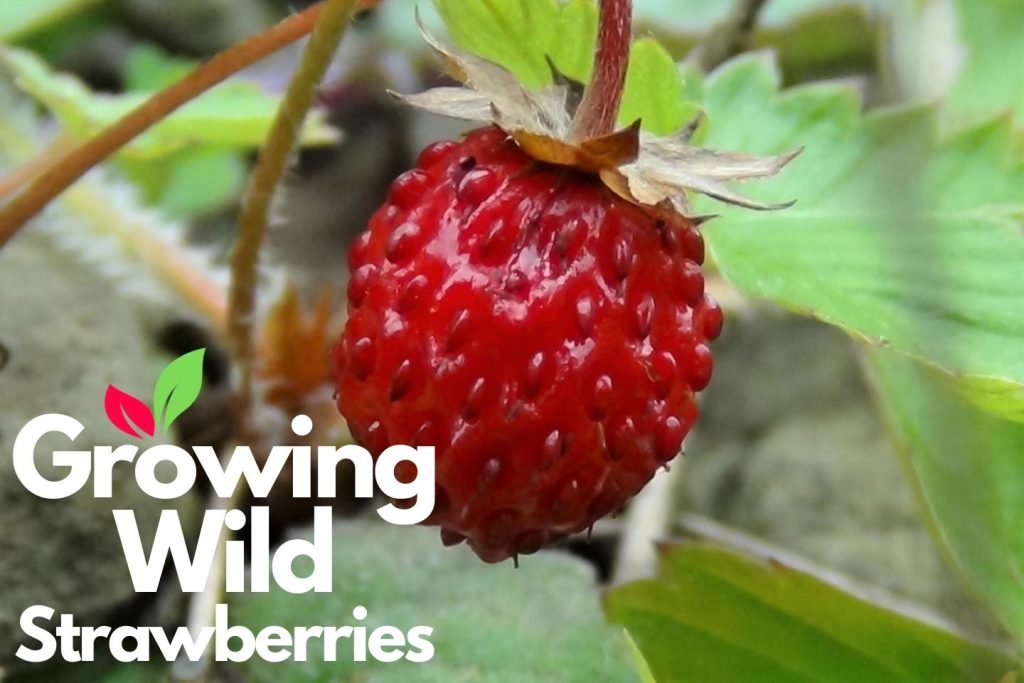
Climate and Soil Requirements
Wild strawberries thrive in regions with cool summers and cold winters. They can tolerate temperatures down to -20°F when mulched. The soil should be rich, slightly acidic loam or sandy loam. Soil with a pH of 5.5-6.5 is best. Good drainage is essential.
Sun Exposure Needs
Although these strawberries naturally grow in shady forest understories, they will be most productive with at least 6 hours of direct sunlight per day. The morning sun is ideal. Afternoon shade prevents overheating.
Propagation From Runners vs. Seeds
These strawberries are easiest propagated vegetatively from daughter plants formed at the ends of runners. But you can also start them from seed indoors in the late winter. Germination rates are lower from seed.
Companion Plantings That Benefit Wild Strawberries
These strawberries make good companions for borage, spinach, bush beans, lettuce, and onions. These can provide shade for roots while allowing airflow. Legumes help fix nitrogen in the soil.
Caring for Wild Strawberries
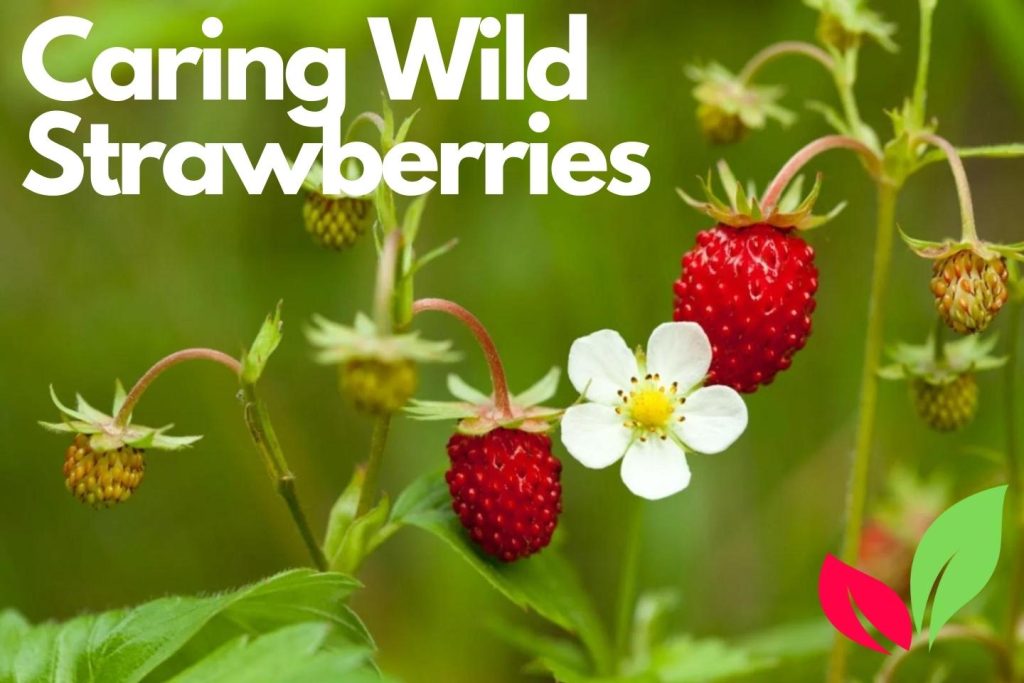
Watering Needs: Consistent moisture is important while plants are flowering and setting fruit. Provide around 1 inch of water per week from rainfall or irrigation. Avoid getting the foliage wet.
Fertilizing Recommendations: Monthly feedings with a balanced organic fertilizer like fish emulsion or compost tea nurture good growth and fruit production. In the fall, use a low nitrogen formula.
Pruning and Deadheading Best Practices: Prune off old leaves regularly to improve air circulation and light penetration. Clip off spent flowers to focus energy on the maturing fruits.
Pest and Disease Management: Leaf spot, powdery mildew, and leaf blight can be issues. Practice good sanitation and air circulation. Organic fungicides can help prevent their spread. Watch for slugs, snails, and birds.
Harvesting Wild Strawberries
When and How to Pick: Harvest berries in the cool morning when fully red and ripe. Gently pluck the fruits, leaving the stem caps attached to avoid injury. Use shallow containers.
Expected Yields Per Plant: Each wild strawberry plant yields about 1⁄2 cup of fruit per season on average. Productivity increases as plants mature over 2-3 years.
Storing and Preserving the Harvest: These strawberries are very perishable. Eat fresh as soon as possible, or preserve by gently freezing whole or making jams. Refrigerate only for 1-2 days maximum.
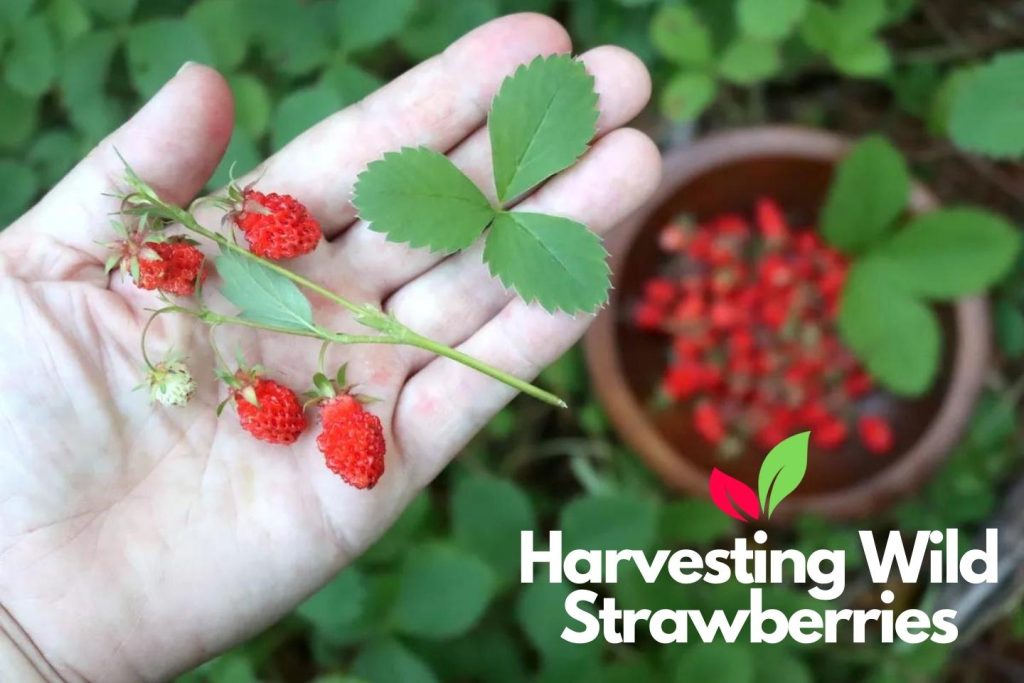
Landscaping and Erosion Control
The spreading habit of These strawberries makes them useful as pretty, edible groundcovers to control erosion on slopes and shady areas. Deer and rabbits tend to avoid them.
Identifying the Right Berries: When foraging, be 100% certain of identification. Avoid areas that could potentially be sprayed with chemicals. Look for the three-part leaves, white flowers with yellow centers, and petite red or pinkish fruits.
Best Times and Places to Forage: Scout out wild patches in early summer near the edges of wooded parks, trails, meadows, and mountainous regions. Search for moist, shady areas.
Sustainable Harvesting Methods: Never uproot whole plants. Gently pick only ripe fruits, leaving plenty behind to reproduce. Take just what you can use fresh.
Uses and Benefits of Wild Strawberries
Enjoy wild strawberries fresh or in delicious preserves, pies, sauces, juices, jams, and more. Their sweet-tart flavour and pretty red colour jazz up both savoury and sweet recipes. It offer antioxidant vitamins and manganese. They may help boost immunity, heart health, skin health, and digestion. The leaves and roots have astringent properties.
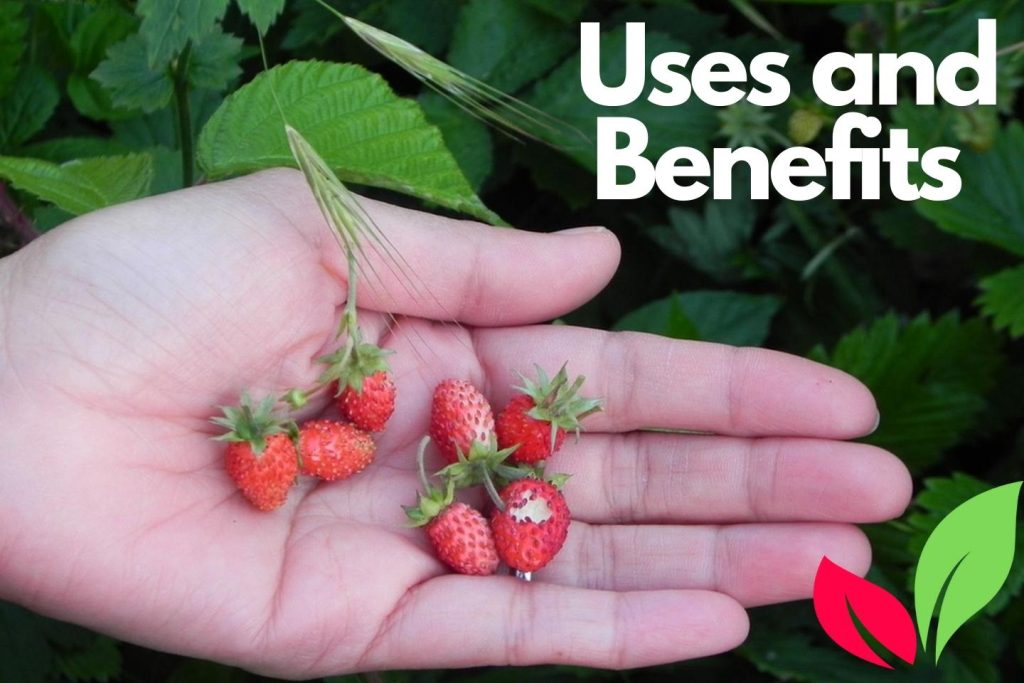
Cultivating Wild Strawberries
Transitioning and Transplanting Wild Plants: You can carefully dig up pieces of an established wild patch to transplant at home. Take runners, roots, and some leaves. Keep plants cool and moist. Plant quickly in the prepared soil.
Caring for Potted Wild Strawberry Plants: You can also purchase nursery-grown potted wild strawberries. Site in part sun, water when dry an inch deep, and fertilize regularly for best fruiting and spreading.
Overwintering Container Plants Indoors: To overwinter potted wild strawberries, bring containers indoors before frost. Place in a sunny window and reduce watering. Cut back runners and old leaves.
Common Problems and Troubleshooting
Diseases Affecting Wild Strawberries
Leaf spot, leaf blight, powdery mildew, and botrytis fruit rot are some possible diseases. Practice sanitation and provide good air flow. Organic fungicides can help.
Pest Infestations
Watch for slugs, snails, birds, and sap-sucking insects like aphids. Handpick pests, use organic slug bait, and spray insecticidal soap as needed.

Other Issues – No Fruit, Small Berries, Spreading Out of Control
Factors like too much shade, overcrowding, overwatering, inadequate pollination, and heavy feeding can impact fruiting. Prune plants yearly and remove unproductive patches to control spread.
Conclusion
Foraging for wild strawberries is a fun outdoor activity that yields a sweet, flavorful reward. The petite berries pack a juicy punch of old-fashioned strawberry goodness. With proper care, you can cultivate your own lush patch for years of home-grown wild strawberry bounty.

